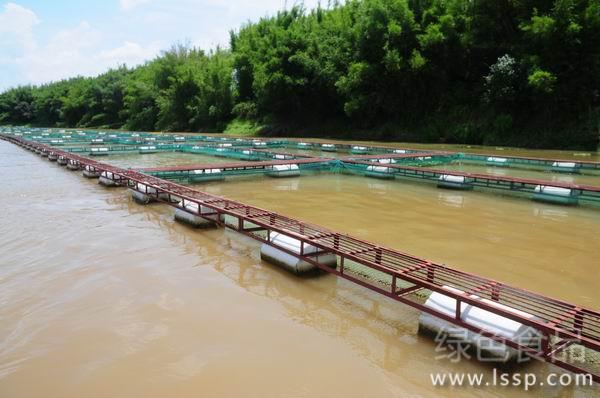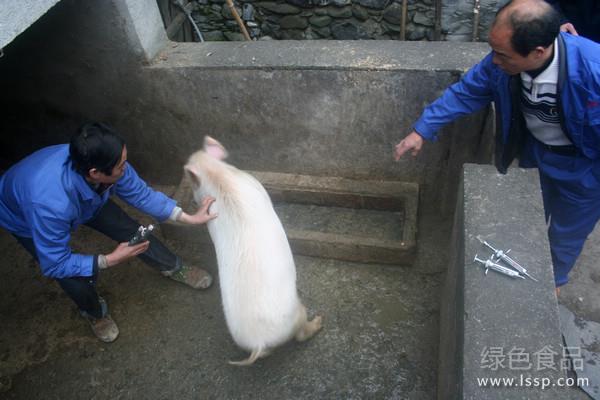Technical points of "recommended Goose raising" to improve Economic benefit

raising geese
Goose is a herbivorous animal with miscellaneous food habits. Planting grass to raise geese can significantly reduce feeding costs and improve breeding benefits. With the increase of scale, intensification and industrialization of goose breeding, artificial planting of high-yield and high-quality forage crops to meet the needs of goose production has become an important link in developing goose breeding and exerting goose breeding benefits. Planting grass and raising geese has high benefit, so it is worth popularizing. In the process of planting grass and raising geese, we should do a good job in the following aspects:
1. Plant good grass
To plant good forage grass, we must first select good grass seeds to achieve both high yield and good eating quality, but also to meet the needs of different seasons for grass. The climate in this area is mild and humid. Wild weeds are better in summer and autumn and can be used. There is a shortage of green fodder in winter and early spring. Cold season forage grass (such as Lolium multiflorum, winter herding-70 rye) should be the main type of seed selection, and warm season forage grass (such as chicory, bitter cabbage, etc.) should be supplemented. The second is to strengthen field management. Grass seeds are generally much smaller than wheat seeds, so intensive cultivation and leveling of the land are very important. If you want to sprout well and grow well, you have to open a good set of ditches, strengthen water and fertilizer management and weeding at the seedling stage, and plant grass carefully like vegetables. Thirdly, rational use, adhere to mowing geese, using straw rack feeding, do not engage in direct grazing, improve the number of birds per unit area. The principle of utilization is timely mowing, appropriate stubble, in order to facilitate regeneration. Young geese need tender grass, cutting interval should be short, young geese have strong digestive ability, cut grass when it grows to 20-30cm height, increase cutting frequency in later stage, slow down grass senescence and prolong utilization time.
2. Raising Goose
To raise goose well, first, we should build a shed. The shed site should be high, ventilated, with sufficient water source and smooth drainage. The shed should meet the requirements of leakage prevention, heat preservation and ventilation. The area should be calculated according to 10 geese/m2. There should be a pond or river nearby for the geese to bathe in. Equipped with temperature facilities to ensure successful brooding in winter, otherwise there is grass can not raise geese resulting in waste. Also equipped with material trough, sink, straw rack and other equipment. The second is to prepare enough supplementary feed concentrate, eating grass alone can not meet the growth and development needs of geese, each goose needs 6-7 kg of feed. The principle of supplementary feeding is that the fine and green parts of the brooding period are half and half, and gradually decrease. The young period is dominated by grass, and the amount of materials used in the later period is increased to promote fattening and listing. It is also flexible to master according to the situation. Third, disease prevention and breeding management should be done well, and the mode of two injections and one drive should be implemented, that is, gosling plague vaccination at one day old; paramyxovirus vaccination at 15 days old; broad-spectrum anthelmintic at 40 days old. Usually pay attention to observe goose flock, do three look, look at spirit, look at feeding, look at feces, find problems timely treatment. Do a good job of temperature, humidity, air freshness control and daily disinfection and hygiene work.
Planting grass to raise geese
3. Do a good job in combining grass and goose
Planting grass is to raise geese, raising geese is the purpose of planting grass, planting grass and raising geese are two connected links, only close combination can succeed. When implementing the project of planting grass and raising geese, we should first plan the variety, area and quantity and batch of geese, so as to ensure that there are geese when there is grass, grass can meet the supply, and geese can digest in time. Two models are presented for reference.
Pattern 1: European black grass or winter herding-70 rye. Sowing from late September to early October, grass supply period from November to early June of the following year, yield per mu can reach 8000 kg, mowing and feeding geese in batches, about 300 geese per mu can be raised. It is divided into 3-4 batches of interbreeding. The first batch of chicks is 30/mu in November and listed at the end of Yuan Dynasty; the second batch is 50/mu in early February at the end of January and listed in early April; the third batch is 120/mu in early March and listed in mid-May; the fourth batch is 120/mu in early April and listed in early June. This model solved the difficult problem of crop structure adjustment and wheat area reduction in rice and wheat producing areas.
Pattern 2: chicory or bitter vegetables. Chicory is a perennial plant. It can be used for many years once sown. The yield is low in the first year, and the yield is 8000 kg per mu in the second year. The grass supply period is from April to November. Pterocarpus angustifolia L. is an annual forage grass with good quality and high protein content. It is sown in March and yields 4000 kg per mu. The grass supply period is from April to November. Chicory has a short period of slow growth in high temperature season, while bitter cabbage grows most vigorously in July and August when the temperature is high. This model is supplemented by wild weeds, about 300 geese can be raised per mu, divided into 3-4 batches. The first batch of 30 chicks/mu in mid-April and listed in late June; the second batch of 100 chicks/mu in late May and listed in early August; the third batch of 100 chicks/mu in mid-June and listed in late August; the fourth batch of 80 chicks/mu in early August and listed in November.
Forage yield and management have a great relationship, under the premise of applying enough base fertilizer, proper application of fertilizer after each cutting, good water and fertilizer management, can improve yield and quality. Planting grass and raising geese should also adjust the number of geese in time according to the growth of forage grass to prevent shortage or waste of forage grass.
Both models can be used to raise geese all year round.
- Prev

Matters needing attention in production management of freshwater aquaculture in overwintering stage
Matters needing attention in production management of freshwater aquaculture in overwintering stage
- Next

Precautions for livestock vaccination to prevent side effects
Precautions for livestock vaccination to prevent side effects
Related
- On the eggshell is a badge full of pride. British Poultry Egg Market and Consumer observation
- British study: 72% of Britons are willing to buy native eggs raised by insects
- Guidelines for friendly egg production revised the increase of space in chicken sheds can not be forced to change feathers and lay eggs.
- Risk of delay in customs clearance Australia suspends lobster exports to China
- Pig semen-the Vector of virus Transmission (4)
- Pig semen-the Vector of virus Transmission (3)
- Five common causes of difficult control of classical swine fever in clinic and their countermeasures
- Foot-and-mouth disease is the most effective way to prevent it!
- PED is the number one killer of piglets and has to be guarded against in autumn and winter.
- What is "yellow fat pig"? Have you ever heard the pig collector talk about "yellow fat pig"?

